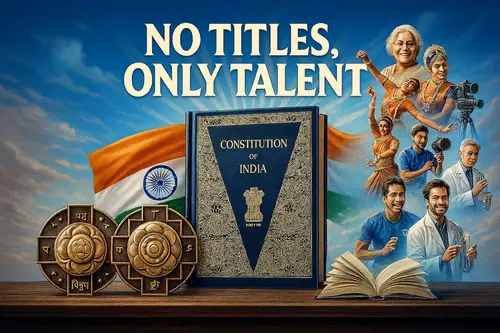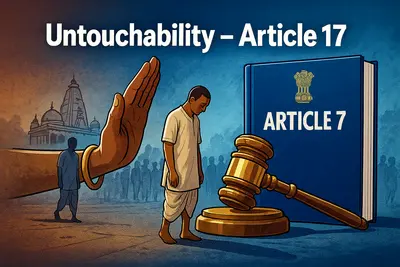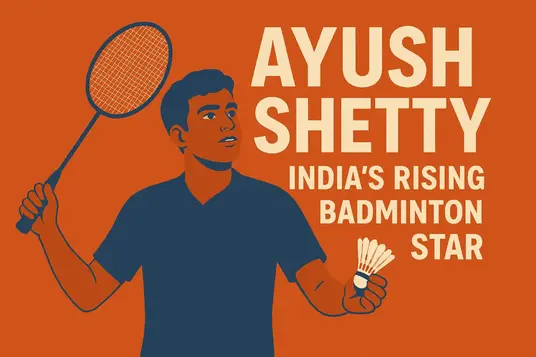
Introduction: The Checkmate of Change
“While kings fall, it’s the queen who moves with strength — on the chess board and outside.”
In the ancient game of chess, strategy has always been king — but the queen has always had the pieces. Today, this symbolic power is being wielded by real queens of Indian chess as they not only rewrite the rules but rewrite the narrative of women in sports and women as leaders.
Chess, that ancient game of courts and conquerors, has become a stage of intellect and breath of spirit. And in India, a quiet revolution is allowing people to witness fearless young women dominate this strategic space. Their victories are not just personal achievements, they reflect a shift in Indian society where women are increasingly demanding space for participation in every corner of the community.
In a historic match, Divya Deshmukh, one of India’s youngest, brightest chess players beat Koneru Humpy, a legend and one of the first Indian women to play chess at a more serious level. Divya’s win was significant. It was not just victory on the chess board, it was a passing of the torch. Humpy who broke barriers for decades can now step back and watch a new generation of Indian girls take up space and carry on her legacy — with confidence, style and brilliance.
The checkmate was clear: India’s women in chess are no longer just competing — they’re leading.
Ancient India’s Chess Legacy and Women’s Role

Two women playing chturanga,the board game. The painting originated from mandi school of painting. – By Partiji Chaturanga, Anonymous, c. 1805 – c. 1815″.
Long before chess existed as a matter of global sports, strategy, and intellect, its origins began in the ancient land of India as a game called Chaturanga. Played in royal courtrooms as early as the 6th century CE, Chaturanga imitated techniques of battlefield tactics, dealing with possible infantry soldiers, cavalry, elephants, chariots, representing today’s implementation of pawns, knights, bishops, and rooks.
Even as it seems India was the birthplace of the timeless game of chessThough in the Mandi school of art, women were painted playing some board game in early 19th century but,, historically we can attest that women were largely excluded from ingress to such strategic playing areas.In a society where the domains of warfare, governance, and even intellect were/can be reclaimed solely as male space, chess was further cemented as a masculine plaything and form of royal training. Although a queen was represented on the board, the queens in real life were rarely invited to play.
Flash forward to the 21st century; the parallels could not be more stark.
In fact, Indian women today do much more than play chess; Indian women are overtaking the world chessboard entirely. Koneru Humpy, a former teenage prodigy herself, globally shattered previously held records and became India’s first female Grandmaster. She opened the doors of opportunity that were long-since closed for generations of women. If we look at the emerging players, like Divya Deshmukh, we can see that they are not only following that path, they are creating them.
India’s women have come a long way from passive spectators of the game, thousands of years ago, to masters of the world’s chessboard.
India’s Trailblazing Women in Chess
India has 23 female chess Grandmasters and International Masters, and the numbers continue to rise each year. These women are not just entering a space dominated by men historically — they are re-purposing it.
While the world loves to honor even legendary names like Nona Gaprindashvilli, the first female Grandmaster (also, awarded in 1978), India has fostered its own set of queens — powerful, methodical, and unstoppable.
Let’s meet the women doing the work to redefine chess in India:
Divya Deshmukh: The Storm in Stillness
Just 19 years old, Divya Deshmukh is both India’s hottest chess prodigy and a representation of a new generation that is ready to lead. She became 88th grandmaster from India, defeating Koneru Humpy in a staggering match. With this, she officially joined the elite on a global scale and sent a strong message that our new queens are ready to take the throne.
Divya’s playing style is composed, calibrated, and aggressive when the situation arises. In chess, that combination is rare. She is known for using defensive setups and flipping the game into a winning position, while also outmanoeuvring more seasoned players with fierceness and precision.
“Divya plays like a storm held together by calculation. Her maturity is beyond her years.”
Srinath Naryanan(Divya’s coach)
She is also among the youngest women in India to cross the 2400+ rating mark, and is widely regarded as a future World Champion.
Koneru Humpy: The Trailblazer
Koneru Humpy’s name is often synonymous with Indian women’s chess. In 2002, she became the first Indian woman to achieve a Grandmaster title. To be clear, she was not a female Grandmaster but a Grandmaster competing with men.
Then in 2019, she won the Women’s World Rapid Chess Championship. She continued to prove that she could always hang with the best. While few Indian women were even competing in tournaments outside of India, Humpy crushed barriers time after time. She exhibited consistency, humility, and razor-sharp correct play that inspired a generation of chess players, which included Divya!
Humpy is still a mentor and inspirational figure and still one of the best female players in the world.
Other Famous Names in Indian Women’s Chess
Tania Sachdev
An International Master and Woman Grandmaster. Tania is a fierce competitor, and she is also one of the most recognizable faces in Indian chess. She has become a commentator on chess and popularised chess to millions.
Harika Dronavalli
A multi-time World Championship semi-finalist and an Arjuna Awardee, Harika has been a consistent performer of late for Indian chess. She has been constantly listed among the top 10 female chess players of the world and is known for her poise and composure even in the most pressure packed situations.
Vaishali Rameshbabu
Vaishali is the elder sister of GM R Praggnanandhaa and is herself a superstar on the rise. She is already an established Woman Grandmaster (WGM) and International Master and has tactical ingenuity and approach towards the full Grandmaster title.
These women — from the revolutionary Humpy to the vivacious new face of Divya — are at the forefront of India’s emergence in chess on a global stage. Each of their moves is more than just a single placement on the board; it is a statement — that the women of India in chess are front and centre, and ready to dominate, and win.
WOMEN IN SPORTS: GOVERNMENT INITIATIVES
Every top woman athlete has not only the skills — but also the support, training, and empowerment from the system. Over the last few years, the Indian government has launched a number of initiatives targeted specifically towards women athletes at the grassroots and elite levels, including women chess players.
Below is some of the major initiatives:
1. KHELO INDIA SCHEME: GENDER-RESPONSIVE SPORTING ECOSYSTEM
The Khelo India Programme launched in 2018, aims to strengthen sport culture in India. The Khelo India Programme has:
- Ensures girls have equal representation in competitions at school and college-level.
- Khelo India Centres were established and included specific support for girls in rural areas and underrepresented groups.
- Supports young girls with finances, coach support and nutrition program.
- The KHELO scheme has marked a watershed moment in promoting and supporting young women sports talent across all sports disciplines, including mind sports like chess, archery,Wrestling etc.
2. TOPS: TARGET OLYMPIC PODIUM SCHEME
The Target Olympic Podium Scheme (TOPS) provides direct assistance for top elite athletes, chiefly women at the global level to target specific events such as the Olympics, cycle games, Asian Games and Commonwealth Games. The support TOPS provides includes:
- Stipends of upto Rs.50000, local and international opportunity, coach access, physiotherapy support, and training equipment.
- With TOPS support community development with women athletes has been led by the leading and top women athletes including, but not limited to: PV Sindhu, Mirabai Chanu, Mary Kom.
- Over 270 athletes supported, of which approx. 45% are women.
3. Fit India Movement: Cultivating a Wellness Culture for Women
- The Fit India Movement is not just for sportspeople, but is stressing upon fitness and wellness and being physically active particularly for girls in schools and colleges
- Chess, a so-called “sedentary sport”, is even included in wellness campaigns prioritizing mental fitness.
- There is new attention to the holistic development of girl children, where both physical excellence and mental excellence is acquired together in a balanced approach.
4. Sports Scholarships, Hostels, and Reservation in Sports Jobs
In addition to all this, there is also government support, which includes:
- Sports scholarships and financial support for female players that do not have economic means.
- Reservation of seats in educational institutions like University of Delhi and in government jobs for sportswomen as a part of sports quota.
- Besides, state and national governments provide girls only sports hostels and training academies to ensure that girls are safe, have access to facilities and coaches that take the sport seriously.
Overall, these schemes are making an impact on a new generation of women athletes in India, empowering them to not only participate but also excel. While we continue to support them further, and when girl players have access to grassroots approaches, it is clear that India is slowly moving towards a reality where players are not viewed on the basis of gender, but rather by how big they can dream.
The Dark Side: Critiques and Complications
As India celebrates the advancement of women in chess and India sport generally, it is equally critical to reflect on the systematic roadblocks that continue to prevent many more from doing the same. Behind every individual success is the untold story of dedicated individuals who struggled — to even have the opportunity, to feel the inclusion and support they are entitled to, and, in many cases, to feel safe.
1. Gender bias and governance problems
While change is often visible, gender bias is entrenched in many of the layers of Indian sport governance. The Brij Bhushan Singh sexual harassment allegations case, where multiple national level woman wrestlers alleged abuse from the former Chief of the Wrestling Federation of India (WFI), is a telling example of this problem – even the best, have no protection from sport power brokers exploiting their position.
The case also highlighted the need for grievance redressal systems to be robust, independent oversight for sporting bodies, and no tolerance on sexual harassment from sporting institutions.
2. Declining Infrastructure for Girls from Rural India
In urban centers, strides are slowly being made to get more women involved in competitive sport but the reality in rural India is much different. While urban areas are slowly catering to women athletes, rural India is still far behind:
- There are many villages without sports infrastructure, limited or unsafe places for practice, few designated training facilities, and no access to certified coaches.
- Mobility, household responsibilities, and social stigmas, inhibit girls from having consistency in their training.
- When chess, as a mental sport, likely has the chance to blossom as a low-cost sport, we find the counter, unfortunate situation that since there is limited outreach, promotion, and a lack of awareness and safe training platforms, there is lost opportunity.
3. Disparity in Coaching and Leadership
Women continue to be vastly underrepresented in key decision-making roles within Indian sports:
- Less than 10% of India’s certified coaches are women.
- Few women have appointments at the heads of federations, state bodies, and selection committees.
- The continuance of women not representing the leadership will mean that this remains an underdeveloped, especially for girls, ecosystem that is predominantly led by men and often leads to women’s less than equitable treatment, biases, and overlooked improper behaviours.
Actions to Take to Increase Women’s Participation in Chess and Sport
- Require gender audits in all sports federations and associations so there is representation and accountability.
- More female coaches & mentors to create safer, relatable spaces for girls.
- More robust legal and emotional support systems to address harassment and discrimination complaints so there is justice and not silence.
- Accessible scholarships and sponsorships for girls from marginalized communities for equity from grassroots to elite.
- Sensitization workshops for sport administrators, coaches, and officials for gender equity and respect at all levels.
Conclusion: Let the Queens Reign
Chess isn’t just about kings and pawns — it’s about strategy, resilience, and bold moves. In today’s India, queens lead the charge.Looking from UPSC’s perspective too, Prelims 2025 asked about Chess champion Gukesh D and youngest chess champion of Indian origin which makes this topic even more important.
From ancient Chaturanga to Divya Deshmukh’s global triumph, the journey of women in chess is a story of reclaimed power. Let us not just witness their rise — but enable it.
As India strides into the future, it must continue to nurture its queens — both on and off the board.
Read more: Women in Chess: India’s Silent Revolution from Humpy to DivyaFreedom of Speech & Expression – Power, Limits, and the Changing Digital Reality

Introduction Citizens exercise free expression to render their government accountable, to inform citizens, and to participate as actors in the process of nation-building. Article 19(1)(a) of the Indian Constitution provides free expression to every citizen so that every citizen can express opinions in whatever format – written, verbal, visual, audio, online or digital interactive (regrettably,…
Article 18 Explained: Why Padma Awards Aren’t ‘Titles’

Introduction: Award Season and the Idea of Titles in the Constitution Each year, the National Film Awards and Dadasaheb Phalke Awards fill the country with pride — rewarding India’s creative genius as well as the spirit of excellence. They honour merit that binds together the cultural and moral fabric of the Republic. But, isn’t it…





your blogs are addictive
Pingback: Who is Ayush Shetty? Meet India’s Rising Badminton Star Who Just Won the US Open - InfoTrigg